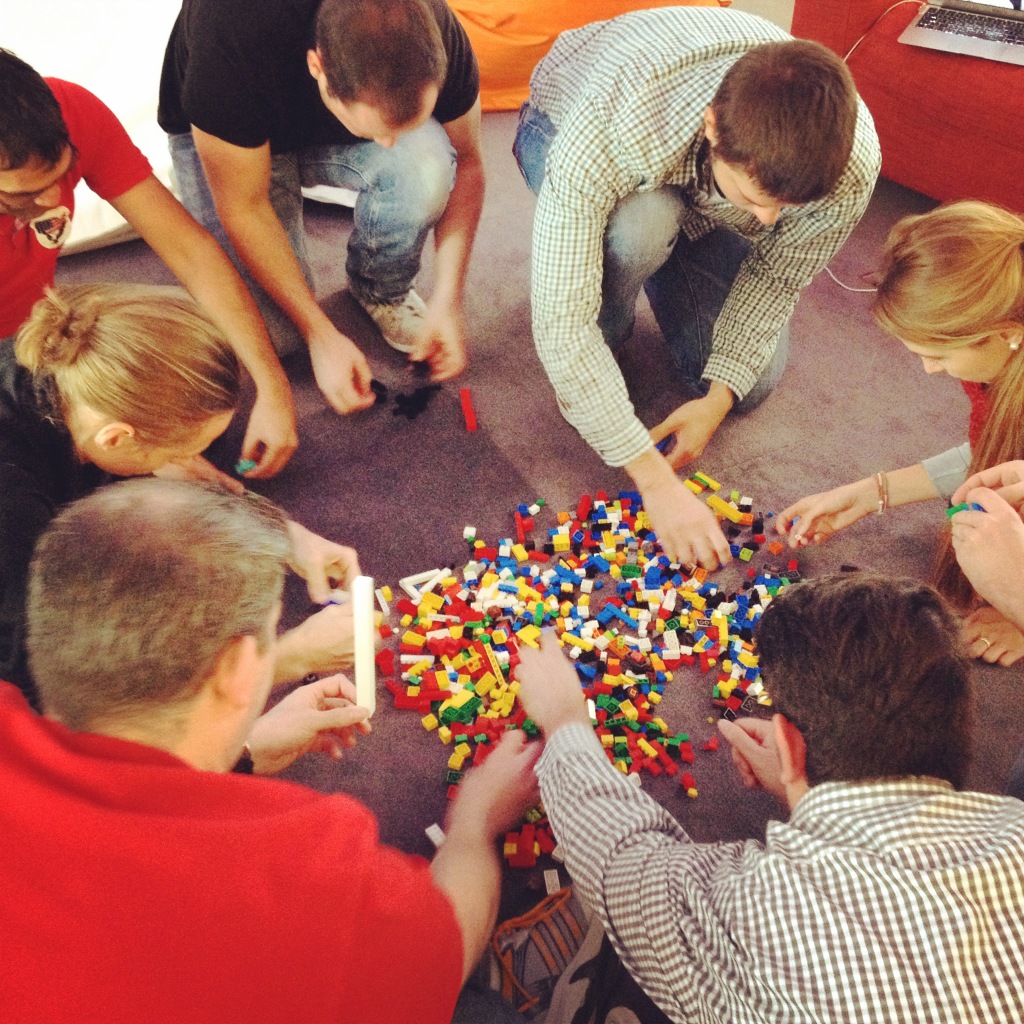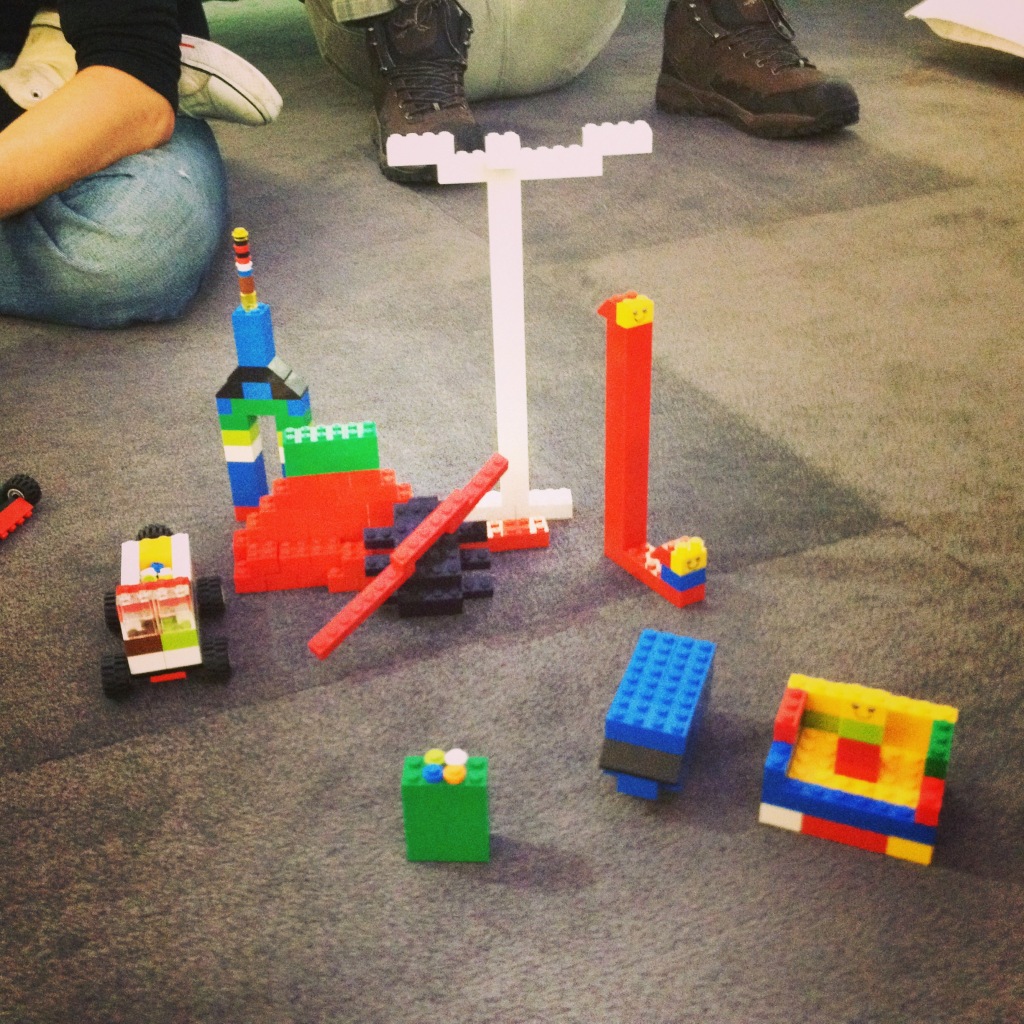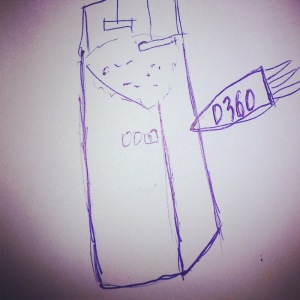The LEGO® – Retrospective is a quite nice method I tried out with a team in my current company. The reason why this exercise is so exciting is the fact that team members are joining a totally new creative space where they can try out to express their thoughts on an abstract layer. In this post I’d like to share some experiences about this improvised retrospective.
Time needed:
preparation: 10 minutes
retrospective: 60-90 minutes
What you can expect:
The LEGO® – Retrospective helps teams to dive into another kind of space where the rules of ordinary life are temporarily suspended and replaced with the rules of this game. As almost everybody played with LEGO® in his childhood you can expect a high engagement as adults might love to remember the good old creative time :-)
Object of play the LEGO® – Retrospective:
Most of us are familiar with LEGO® – one of the best known brand toys. This game gives team members an opportunity to express their views on an abstract way. It’s valuable because you are able to create the conditions that will allow unexpected and surprising solutions to emerge.
How to play:
One of the best detail is that you create an alternative world, a model world. Therefore it would be good to get out of your daily environment and change it to a creative place which has no “office” ambiance.
To set the stage, the team members should agree to abide by the rules of that new space willingly (e.g. prime directive) as it is not a game if people are forced to play. This agreement among all team members creates a safe place where the members can engage in behaviour that might be risky or uncomfortable.
Before you start you should prepare a certain amount of mixed LEGO® – bricks (amount depends on the team size). Tell the members to sit down in a circle and put the bricks in the middle.
In the next step tell the team:
Create a figure out of LEGO® – bricks that reflects the last sprint.
Tell them that there are no boundaries and that they can use as many bricks as they need. Give them enough time to get creative and to think about the last sprint. Some will start right away, others might think more. Music can help to make the environment even more comfortable.

After all team members finish, give each person some minutes to tell what they want to express with their figure. This technique reveals good and less positive things. Let them start small discussions in order to find out what went well and what worries them.
As you want to help the team, start a second round and tell them:
Create a figure out of LEGO® bricks that represents the next important step for the team in order to get better
You will give them again 5-10 minutes to think about where they could improve. This session might take a little bit longer as the problematic symptoms can be quite obvious but it is not an easy job to find a potential solution.
Afterwards, let every person explain his/her figure. Keep track of all information by making it a part of the environment. So once you have the ideas flowing into the room, put them on a wall or next to their figures.

In the final act you want to move toward conclusions – getting closer to the actions and the next steps. Discuss with the team how they can continue to practice what was written down and come to actions that the team will do.
 This game can be used in different ways. So if you don’t have all team members in one place, you can also use some white paper and ask the persons to draw!
This game can be used in different ways. So if you don’t have all team members in one place, you can also use some white paper and ask the persons to draw!
The feedback from the attendees was quite positive, the main statement being that you get a quite different look on the past sprint, when you try to build it physically.
Playing with LEGO® in an agile environment is actually nothing new. LEGO SERIOUS PLAY for instance is an innovative, experimental process designed to enhance innovation and business performance.
After my first LEGO® Retrospective I had a bunch of new ideas how to improve so I will evolve it the next time. I’ll keep you up to date :) Feel free to use part of this retrospective. I would love to hear how it went.
In case you are interested in Agile Retrospectives, Luis Goncalves is creating a 12 Week Agile Retrospective Program. This is a complete self study program where you will learn anything that you need to become a great Agile Retrospectives facilitator, just click here to access it.
More Links:
Leave a star rating for The Lego® Retrospective:



 (5 votes, average: 4.20 out of 5)
(5 votes, average: 4.20 out of 5)
Hi Dominic, this looks fun. Thanks for the idea, hopefully we will try this out on time.
Hi, Thanks for reading. Just run the experiment and try it out. Let me know how it was! I’m very curious about your experience!
Hi,
Thanks for sharing! We recently started testing having retros with Legos. The whole process is more or less like you described in this article. This is a fun stuff at the beginning but after several Sprints, I started to feel a bit boring(or just because my imagination slowly dieing :P ) . Plus it has been a bit hard to get concrete improvements out from the retro. I wonder have you been experiencing the same thing and any suggestions to make the retro more fun and practical ?
Thanks!
/Ming
Hi, Dominic,
I hope you are fine.
It seems to be crazy but the world is spinning about 3 years and now a friend sent me this article today. So, in the south of Brazil, I’ll do your retrospective next January 5th.
Not exactly like you wrote down here but with one activity as Warm-up and following the Retrospective agenda (by Caroli e Caetano).
I’ll tell you how it works.
My best regards.
Hi Alexandre,
I’m happy to read that my article is helping you in your next retrospective. It’s always a great feeling when some people get inspired in order to create something even better! Would love to hear from you. Why not sharing your experience in form of a blog post? Let’s publish your challenge! What do you think?
Dominic,
I posted my experience with retrospective with LEGO on facebook and Marko Rillo asked me to post on his blog/community.
So here is the post:
http://seriousplaypro.com/2018/01/22/retrospective-with-lego/
I liked very much the activity.
Thank you so much!
=D
Pingback: Retrospectiva com LEGO® – alexandre silva